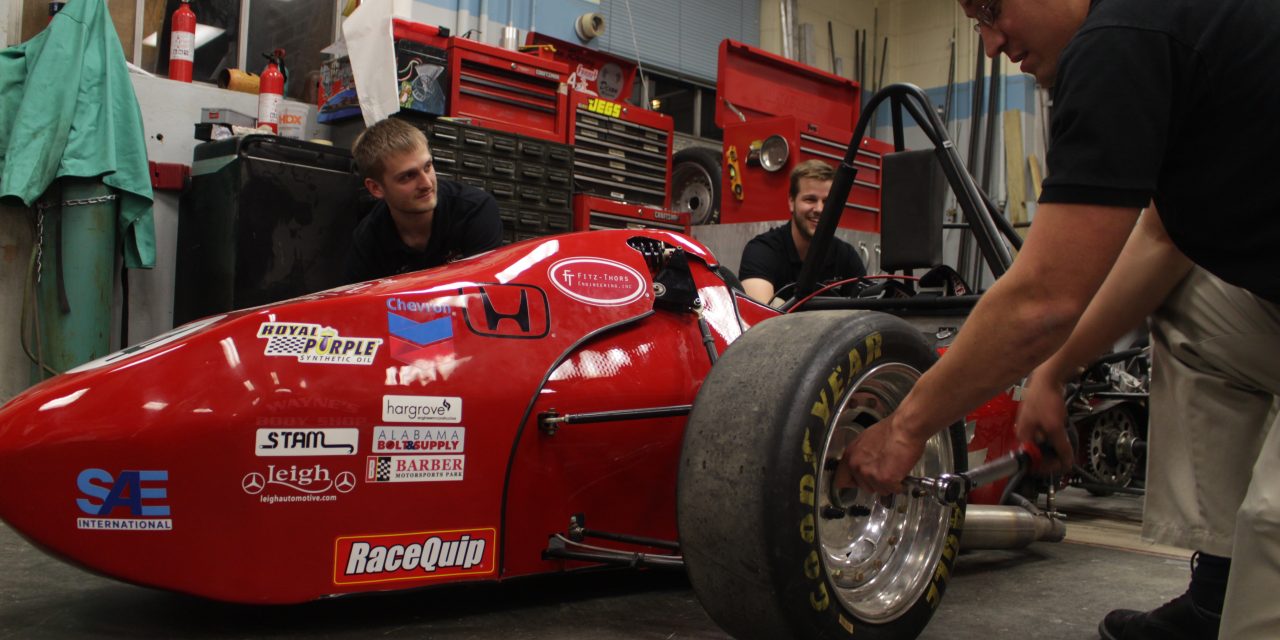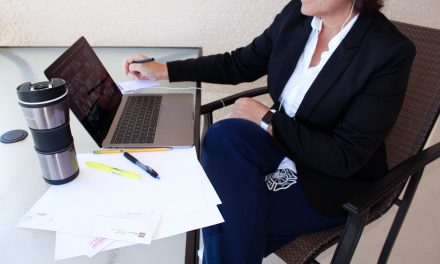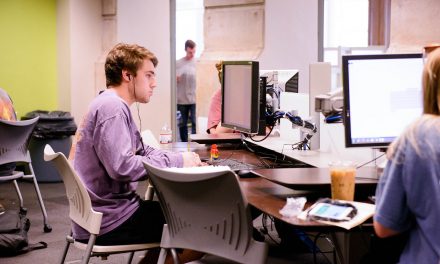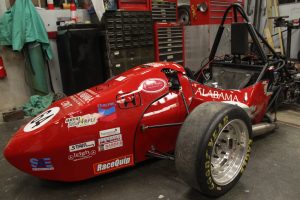
The team’s 2015 car sits in there workshop. They hope this year’s car will be even better than their last.
As most students saunter home for the day, the members of UA’s Formula Society of Automotive Engineers (FSAE) team head to their workshop, motivated more than ever to overcome last year’s setbacks.
Formula SAE is a student-lead competition in which teams design, build and test formula style cars against other schools in the U.S. Each car is judged based on static events such as engineering design, cost analysis, and business presentation, as well as a set of dynamic events such as acceleration,skid pad test, and endurance.
To compete in the dynamic events, teams must pass a rigorous safety check to ensure that the car is safe to drive. It is last year’s safety check that the team hopes to shake from its memory.
During the team’s safety check, a wiring harness came loose causing a small electrical fire that resulted in the team not having enough time to complete the safety check. The team did not let this discourage them though, as they improved from the previous year’s overall performance.
“We saw our business presentation move up 40 spots from the previous year,” said Chris New, a junior electrical engineering major. “Our design moved double digit placing. Overall, we didn’t move far because of not driving, but we did see improvement.”
This year’s team has their goals set high.
“We are trying to make people think about more than football; maybe a little car on the side when they think about Alabama,” He said. “We are shooting for top 50 percent this year, which would be the highest our team has ever scored at Michigan. So it might not seem huge for people outside, but if we got to that point, we would be ecstatic.”
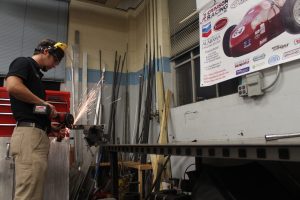
A team member grinds a piece of frame. The team hopes to make people think about more than football when they think of Alabama.
As with most endeavors, the team has two main obstacles that they must overcome: time and money.
“It’s just getting the car done on time, it takes a lot longer than you would think,” said Tony Wente, a senior mechanical engineering major. “Once you think you’re getting close, you realize it’s still a long way away.”
Every year the team builds a new car almost entirely from scratch in order to improve on all aspects of their previous design. However, due to the monetary demands that come with this objective, the team must perform an intricate balancing act in order to produce the best car they can for their budget.
“[It] is not unlike real engineering, you could propose something to your company and they would be like, ‘This is too expensive for what we want to spend on this project,’ and you would have to move [the budget] around,” said Kara Parks, a junior majoring in mechanical engineering and a member of the University’s Honors College.
Being a part of the FSAE team does have rewards. Students learn and implement valuable engineering and design principles that go beyond what is taught in classrooms. Wente expressed how easy it is to get caught up in the numbers when one is an engineering major; many times problems are solved without realizing how they relate to the outside world.
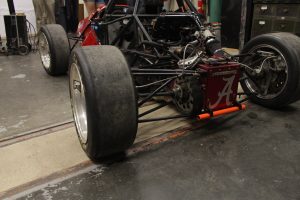
The engine of last years car. It can accelerate to 60 in about 3 seconds, and tops out around 120 mph
“It makes you think differently than you would in class because you are not just thinking, ‘I got this in a book. How can I solve this math problem?’” Wente said. “In this you are like, ‘Ok, how can I drop weight to make the car faster?’ You are given a general real world problem and you have to solve it just using your head.”
However, there is an upside to all of the hard work put into the car, and that is the memories and friendships that emerge directly from the tough times they have gone through together.
“It’s just a combination of all the little things,” Wente said.“Like how crazy you get at four o’clock in the morning working on the car for a week straight. The experiences you get working over breaks, and the memories you make with team members.”
As New and Parks stood around the car, immersed in talk about the technical aspects of it, a question eludes them, a question so simple a 2-year-old might ask it: How fast can it go and how fast can it get there?
“The car will accelerate 0-60 in about 3 seconds, and tops out around 120 mph.” New said. “We don’t know the top speed for sure, because we don’t have a parking lot large enough, but if you find us one we will test it for you.”
The speed is what drives many of them to push through all of the hard work.
“You get to build an awesome race car,” New said. “Nobody would do it if it was formula washing machine.”
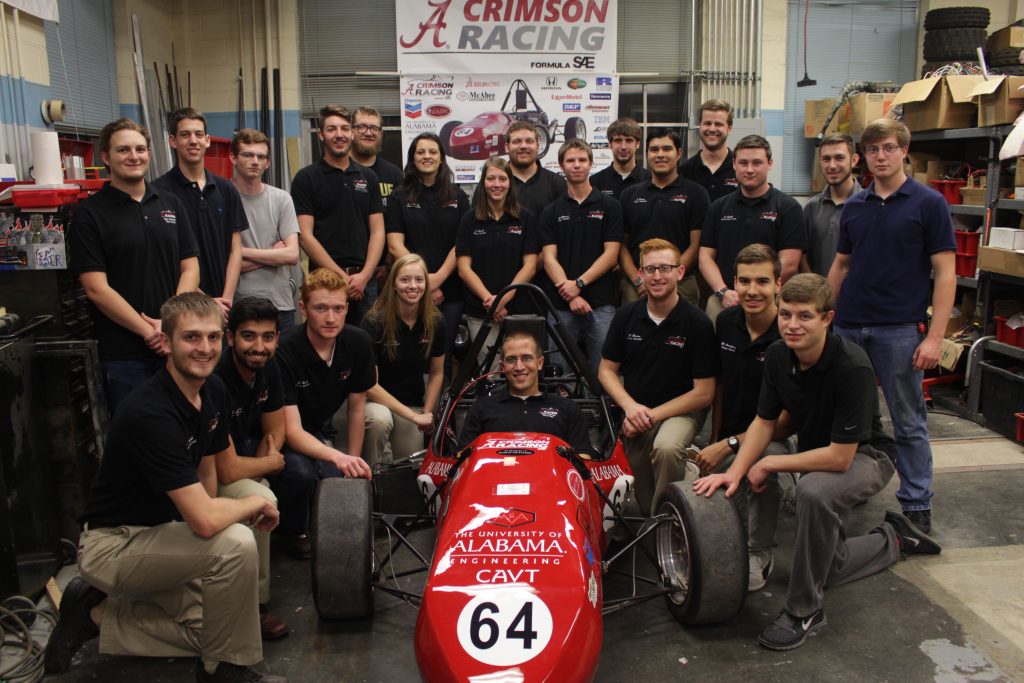
Members of the 2016 FSAE team with last year’s car.

